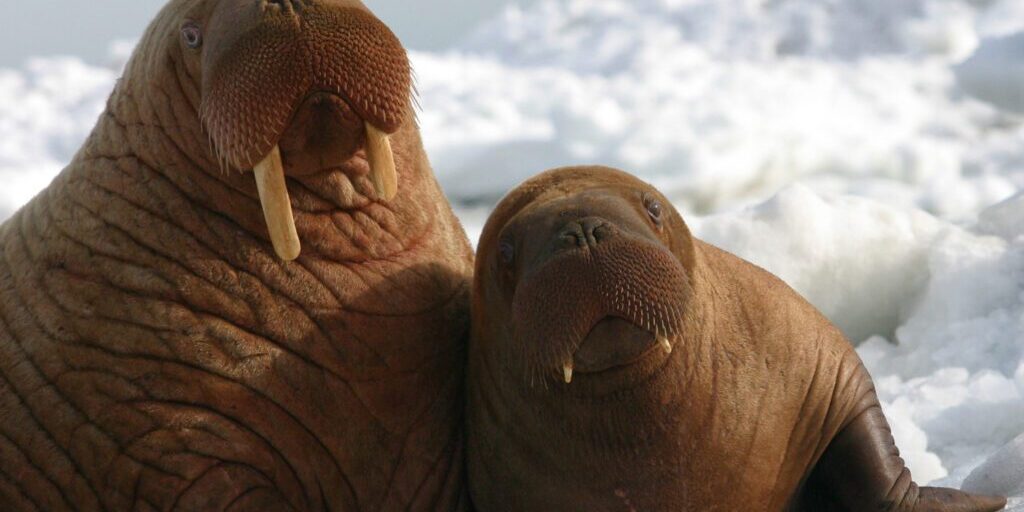Pacific Walrus are officially off the hook when it comes to a mysterious illness that’s been plaguing seals and walrus in the region.
An unknown disease swept through seal and walrus populations along the Bering Strait and the North Slope starting in the summer of 2011.
Up to 300 seals were found suffering from hair loss, skin sores, and unusually lethargic behavior. Dozens of walruses were also found with similar sores.
A handful of seals also died, causing marine mammal regulators to declare an unusual mortality event (UME) to monitor the disease. But with only three reports of sick walrus in the last year, walrus have been taken off the UME watch list.
Vera Metcalf is the Director of the Eskimo Walrus Commission at Kawerak. Referencing the delisting of walrus, Metcalf said, “I think the move is the right direction. I know that our coastal communities and subsistence hunters have been observing changes in the environment, but fortunately, they’ve been harvesting very close to healthy walruses.”
No new sick seals have been reported since 2012, but Julie Speegle with the National Oceanic and Atmospheric Association says seals are still being watched.
Speegle said, “The UME is still open for ice seals. We do continue to see what seems to be pretty healthy ice seals, but they seem to be survivors from past illness.”
These survivors are seals displaying hair loss but otherwise healthy behavior and body condition. Four survivors have been reported this year.
Whether the illnesses affecting the seals and walrus were related remains unconfirmed. Both animals remain undiagnosed despite extensive testing for toxic algae, viruses, bacteria, and industrial contaminants.
Gay Sheffield is with the Marine Advisory Program in Nome. She says the lack of answers is worrying
“This has been a big food security, public health concern,” Sheffield said.
Sheffield said seals and walrus are safe to eat at the discretion of customary and traditional practices, and there have been no reports of the infection transferring to humans, dogs, or other animals.
Alaska and eastern Russia share a single population of marine mammals that enter into the others’ waters during certain life stages, making the UME an international concern.
Joel Garlich-Miller is a walrus biologist with the U.S. Fish and Wildlife Service. He says the Service has worked closely with its Russian counterparts throughout the event.
With current political tensions between the two countries, he says collaboration continues just with cumbersome red tape.
“We just need to make sure,” Garlich-Miller said, “all these communication lines are reviewed at a State Department level. And once we have the green light on that, we can continue to go about our business.”
Garlich-Miller says maintaining dialogue between the two countries is critical.
“We absolutely need to be closely coordinated with our Russian counterparts,” Garlich-Miller explained, “to track the population status, evaluate threats to habitats, make sure that subsistence harvest levels are appropriately monitored for sustainable harvest. It’s essential for the continued conservation management of the species.”
Investigation into the UME continues. The North Slope Arctic Borough and the University of Alaska Fairbanks have begun testing infected seal carcasses for radiation from the Japanese Fukushima nuclear reactor disaster. Results should be released in July.
Residents who spot sick or unusual wildlife are asked to report their finding to the Marine Advisory Program at 1-855-443-2397 or the Eskimo Walrus Commission at 1-877-277-4392.







